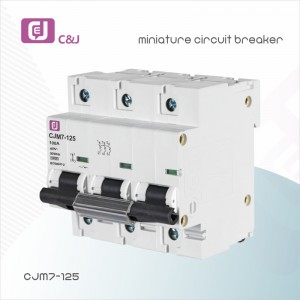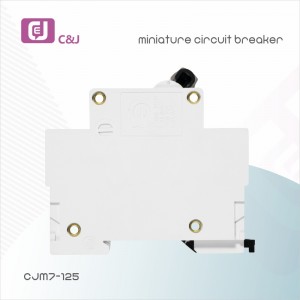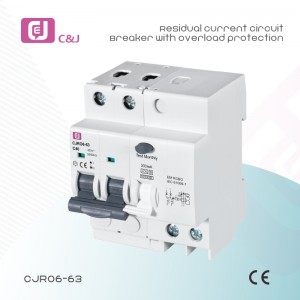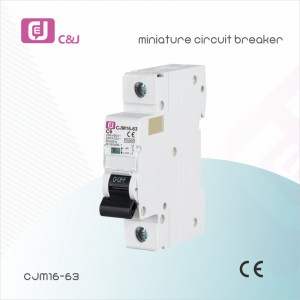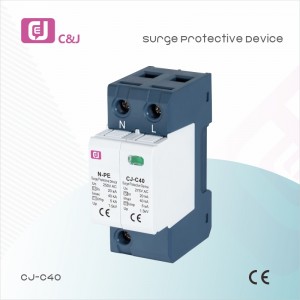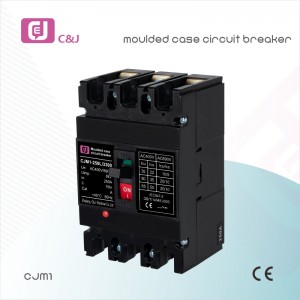Miniature Circuit Breaker (MCB) CJM7-125
Construction and Feature
- High short-short capacity 10KA.
- Designed to protect circuit carrying big current up to 125A.
- Contact position indication.
- Used as main switch in household and similar installation.
- Low energy consumption and significant energy conservation
- Improve the production and ecological environment and economize equipment maintenance
- Overload protection
- Close quickly
- High breaking capacity
Safe and Reliable
- Automatic close with less electric spark for extended working life of appliances
- Protection degree: IP20—To guarantee a safe and reliable connection
- Stain-resistance: Level 3—To prevent dust and conductive pollution
Specification
| Standard | IEC/EN60947-2 | ||||
| Pole No | 1P, 2P, 3P, 4P | ||||
| Rated voltage | AC 230V/400V | ||||
| Rated Current(A) | 63A, 80A, 100A | ||||
| Tripping curve | C, D | ||||
| Rated short-circuit capacity(lcn) | 10000A | ||||
| Rated service short-circuit capacity(Ics) | 7500A | ||||
| Protection degree | IP20 | ||||
| Reference temperature for the setting of the thermal element | 40℃ | ||||
| Ambient temperature (with daily average ≤35°C) |
-5~+40℃ | ||||
| Rated frequency | 50/60Hz | ||||
| Rated impulse withstand voltage | 6.2kV | ||||
| Electro-mechanical endurance | 10000 | ||||
| Connection capacity | Flexible conductor 50mm² | ||||
| Rigid conductor 50mm² | |||||
| Installation | On symmetrical DIN rail 35.5mm | ||||
| Panel mounting |
What is MCB?
Miniature Circuit Breaker (MCB) is a type of circuit breaker that is small in size. It immediately cuts off the electrical circuit during any unhealthy condition in the electricity supply systems, such as an overcharge or a short-circuit current. Although a user may reset the MCB, the fuse may detect these situations, and the user must replace it.
When an MCB is subject to continuous over-current, the bimetallic strip heats up and bends. An electromechanical latch is released when the MCB deflects the bi-metallic strip. When the user connects this electromechanical clasp to the working mechanism, it opens the microcircuit breaker contacts. Consequently, it causes the MCB to switch off and terminate the current flowing. The user should individually switch on the MCB to restore the current flow. This device guard against defects caused by excessive current, overload, and short circuits.




